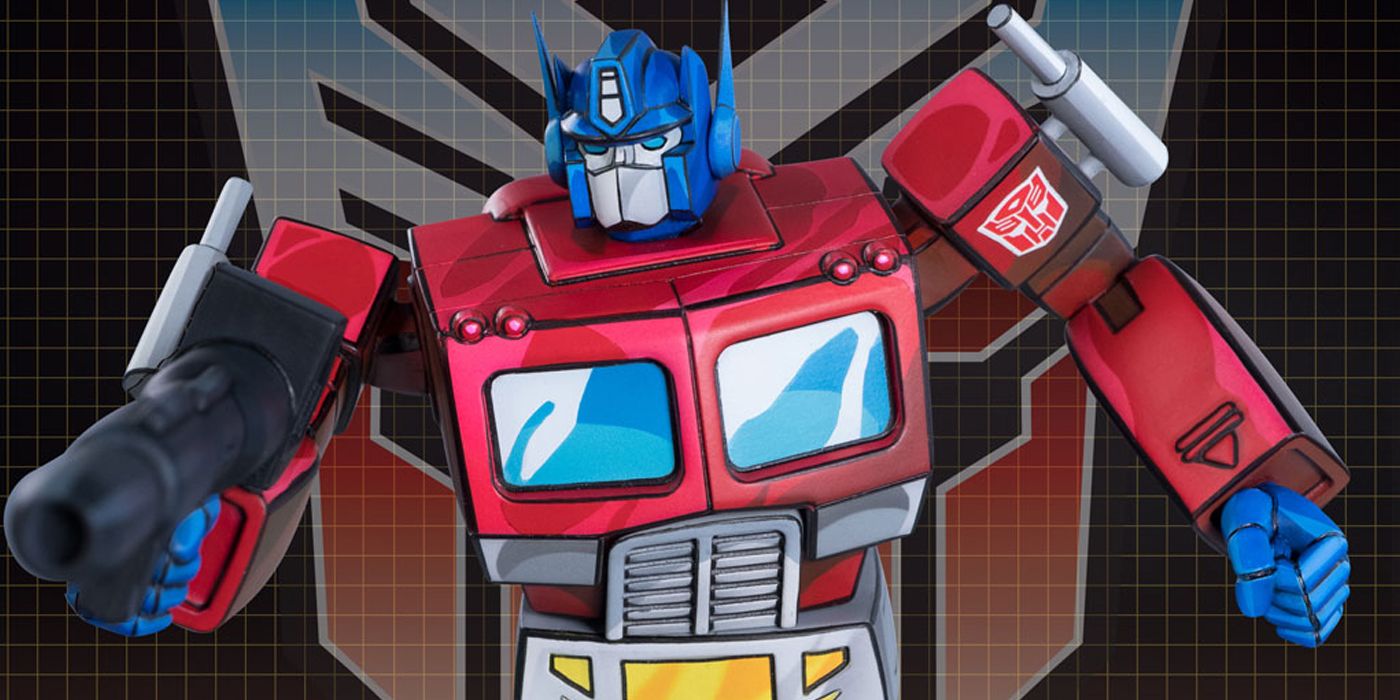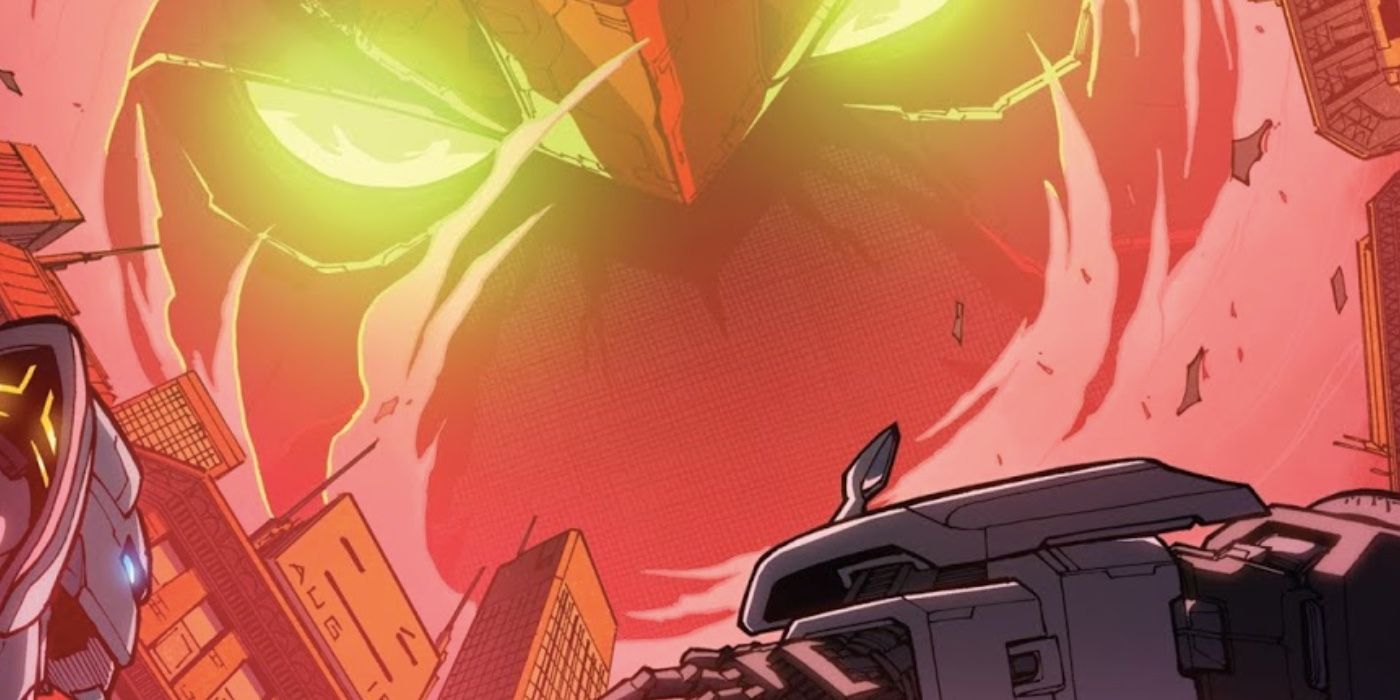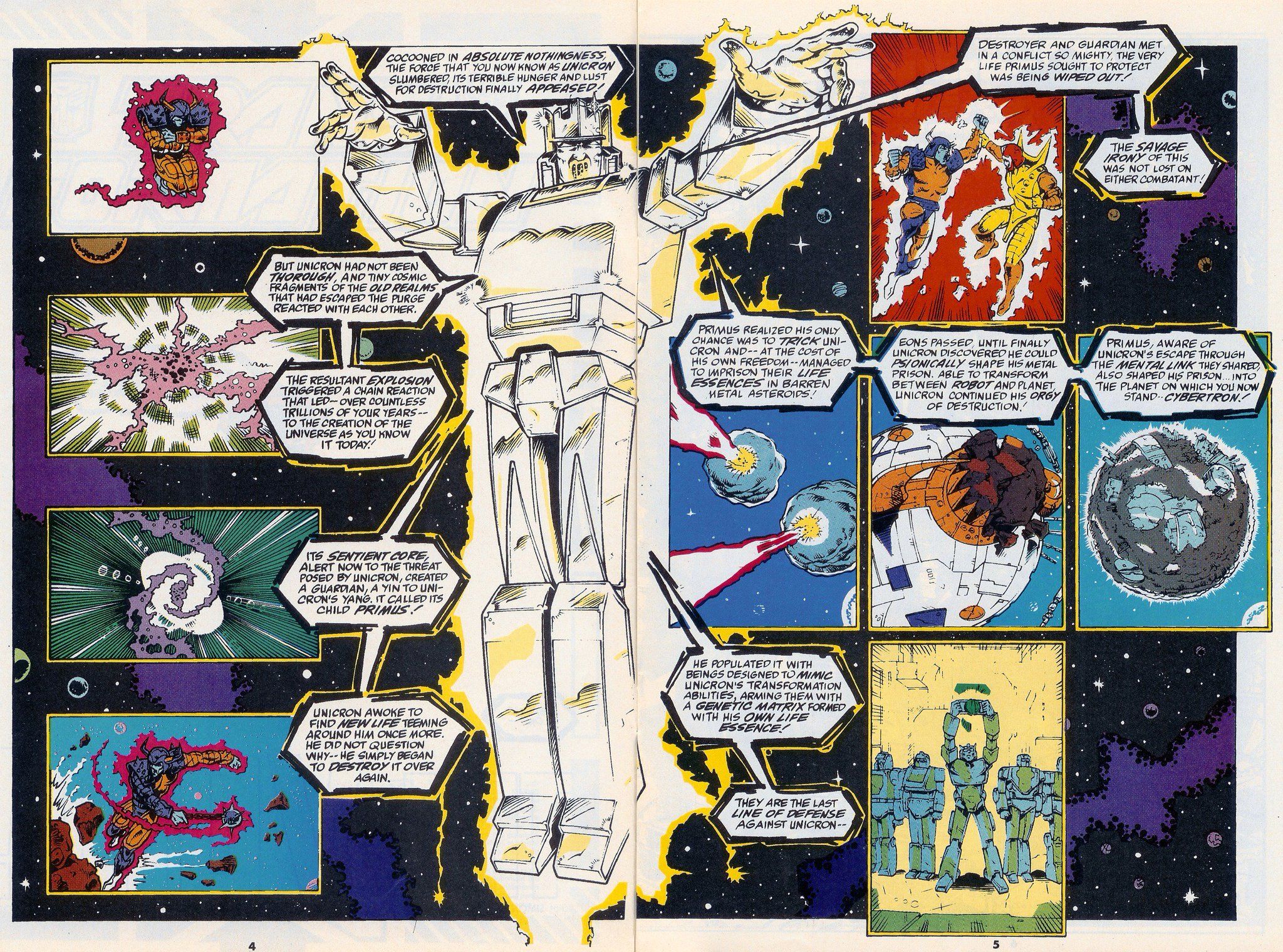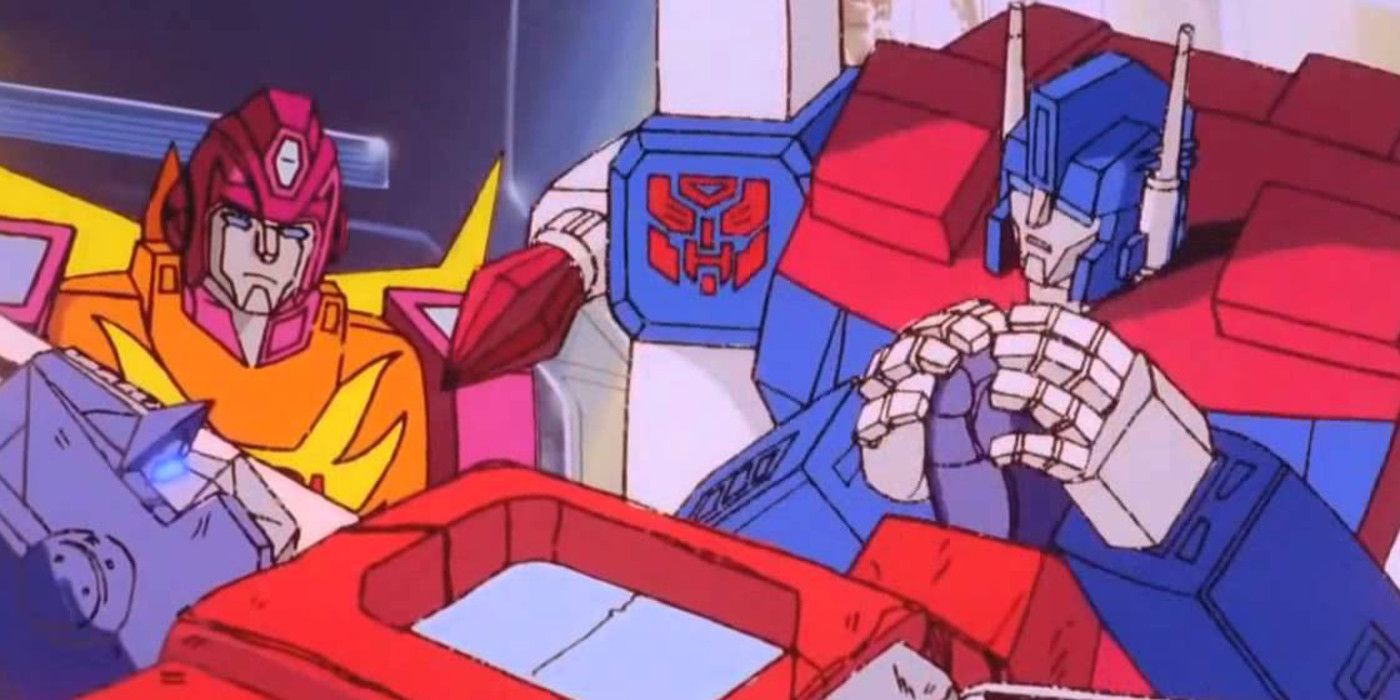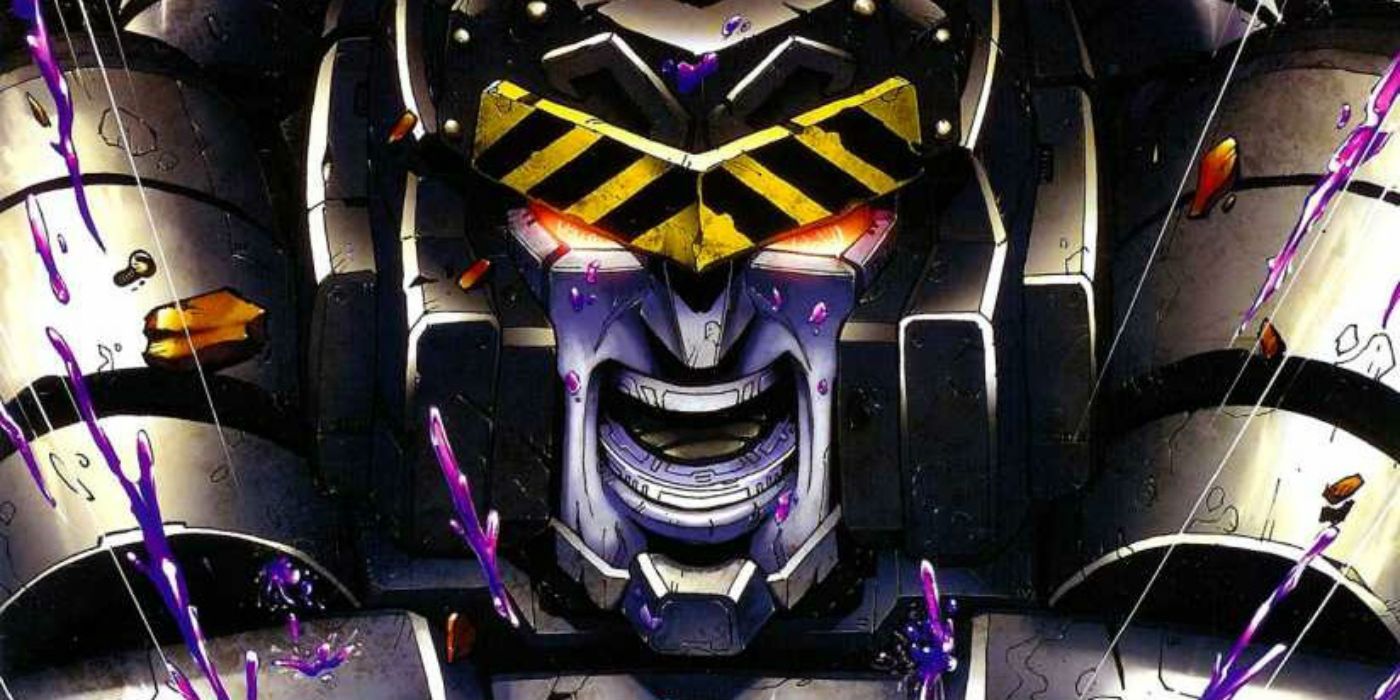Most people probably wouldn’t expect the Transformers, a race of robotic beings, to adopt or believe in any sort of religion instead of devoting the entirety of their existence towards the advancement of science (and, in turn, their design). But Cybertronians are possibly one of the comic’s most religious species - or, at least, most religious form of artificial intelligence. While the spirituality of the Transformers is mostly kept to the comics and TV shows, religion has made its way into the mainstream (i.e. the Michael Bay films) in the form of relics and artifacts such as the Allspark and the Matrix of Leadership. While not referred to as sacred in these films, they are by no means secular, all of them playing major roles in the holy texts known as the Covenant of Primus. Yes, the Transformers have a Bible, except rather than a collection of manuscripts, the Book of Primus is a data bank that contains scriptural data tracks.
Besides the Allspark and Matrix of Leadership, the only other time in the movies that suggest even a hint of spirituality takes place in Transformers: The Movie that foretells, like a prophecy, how "one day an Autobot shall rise from our ranks, and use the power of the Matrix to light our darkest hour." The possibility that this quote has religious undertones is reinforced by the Autobots repeating - some might even argue, chanting - the phrase "'Til all are one” again and again. This isn’t just a random utterance, either. These words have been spoken in some form in essentially every continuity.
The religion in Transformers is, like all of its forms, quite long and complex, yet ripe with inconsistencies, where mythos have been refuted by evidence, unfulfilled prophecies or conflicting passages. This isn’t mentioning the endless retellings throughout the multiple continuities, from Marvel to IDW. But there are some themes that have withstood the tests of time.
The Lore of The Creator-God and Planet Eater
The almighty Primus of light might just be a giant, sleeping computer that takes the form of a massive head ensconced in the center of the robotic world known as Cybertron, but he is the great creator-god of the Transformers. He is also not alone. Primus has been at constant odds (read: fighting violently) with his brother and gluttonous arch-nemesis Unicron who seeks to consume all of existence. Unicron’s voracious appetite is what has compelled many to refer to the dark god as the Planet Eater. Other colorful designations include Lord of Chaos and the Chaos Bringer.
Throughout the Marvel comics continuity, lore has always spoken of Primus and Unicron, but their status, as well as the number of other celestial beings in existence, differ depending on who is telling the story. These diverging mythos include that Unicron and Primus are merely two of a whole host of other gods, are last surviving members of their kin, are the only gods that have ever existed or are the creations of “The One” who sent them out into the void to explore the cosmos. In the latter retelling, both Primus and Unicron might be mere emissaries, but Primus can somehow exist simultaneously across multiple universes, where his death would herald the end of all existence, while Unicron can only be in one universe at a time and his death would mean the end of nothing, except himself. (It’s possible that Unicron became evil due to the jealousy that undoubtedly came as a result of his brother’s omnipresence.)
As to why Primus created the Transformers, one explanation is one based out of necessity. In this particular myth, Primus, in an epic fight against Unicron, is defeated across not just one, but multiple planes, to which the creator-god tries to escape to another realm, but in so doing, becomes imprisoned inside a massive metal asteroid. Unicron foolishly follows his foe into this new plane whereby he, too, gets trapped. Primus adapts to the situation by making his prison into what later becomes known as Cyberton, while Unicron creates an all-devouring planet that can transform similarly to how a Transformer does. To protect himself from being devoured, Primus creates the Transformers.
Where Transformers Go When They Die
Known as the Matrix, Allspark, the Well of All Sparks or the Afterspark, the Transformers’ afterlife is the living essence of Primus that takes the shape of a swirling mass of a seemingly endless amount of sparks flying through the cosmos, much like how stars make up a galaxy. Incidentally, this afterlife also serves as the place where every Transformer is born. Within this swirling mass of sparks, one spark will essentially depart during the birth of a Transformer to enter and, in turn, grant life to the lifeless robotic form, which will then be sent to the realm of the living. This spark will later return upon the Transformers’ death to the swirling essence of Primus to transfer all of the experiences and feelings of the deceased robotic being into what is known as the “Wisdom of the Ages,” which is basically a massive database.
While every spark brings back the experiences of their Transformer during its lifetime, the individuality of every Cybertronian is lost when their spark returns. However, a select few who are tasked with carrying the Matrix of Leadership, a conduit for the power of Primus, do not lose themselves within the Allspark so they can wield the artifact if they ever need to guide visitors entering and leaving their realm. Unlike essentially every religion, this relic actually eliminates the need to believe (at least in regards to an afterlife) since the Matrix of Leadership is actual proof that an afterlife exists.
Incredibly, there is apparently a separate afterlife for Primus, a place he wishes to one day enter called the Omniversal Matrix. Unfortunately, he can’t ascend into this holiest of holy places until he defeats Unicron (which he hasn't). And as for there being a Transformers equivalent to hell, many Decepticons speak about a place called The Pit, which they use for swearing (“by the Pit”) and derogatory usage, such as “Pit-bound scavengers.” There is, however, no evidence that such a place exists. Similarly, the legend of the Last Autobot, a guardian prepared by Primus who is said to destroy Unicron, is regarded as fact, while the Deception's equivalent, “Ultimate Warrior,” is believed to be a corrupted myth.
Religious Factions, Atheism, The Transformers’ Big Bang, and Megatron
Throughout the various continuities, most Transformers have believed or revered their ancient religions, but in IDW’s installment, the beliefs became much more diverse and their followers more dynamic and, some might say, more erratic. For example, religious followers of a deistic lore concerning the five gods of Cybertron called Primalism tattoo themselves with the Matrix. Meanwhile, a faction within the same religion known as the Militant Monoform Movement not only rejects the portion of Primalism that tells of a deity that forged and gave Cybertronians the ability to transform but remove their transformation cogs in protest. Other sects emphasize the belief in miracles, the existence of unholy beings, the concept of Primus only being beauty in the natural world, the importance of color, and, in the recent Transformers: Galaxies’ Gauging the Truth arc, emphasize the repetition of chores and seek the eradication of those who do not follow their faith.
And, yes, there are atheists, and, yes, there is a Transformers equivalent to the Big Bang theory that describes how the universe expanded from an initial state of extremely high density and temperature. Known as Atechnogenesis, this secular explanation says that gears, levers and pulleys naturally began interacting with each other to create life on Cybertron. These nonbelievers are usually referred to as “evolutionary engineerists.” One such atheist, the reformed Autobot known as Jetfire, refuses to swear by Primus and instead swears by the similarly sounding Primacron, an ancient scientist who ostensibly built Unicron near the dawn of existence.
Lastly, thanks to the Covenant of Primus, the name Megatron was well-known long before the Decepticon leader of the same name took power. That’s because a Megatron appears in scripture, and based on what is written, naming anyone Megatron is essentially the same as if someone named their child Anti-Christ. In the Covenant of Primus, a dread figure known as Megatron is referred to as “the beginning of the end” for his role of bringing great destruction to all of time. Throughout most of the Transformers continuities, the connection between the dread figure in the Book of Primus and the leader of the Decepticons is never proven or refuted, except in Beast Wars where the leader of the Predacons says he chose the name Megatron based on scripture.

